November 1, is the beginning of the two-day celebration that makes up the Day of the Dead (Día de Los Muertos.) This holiday is mostly celebrated in Middle America but can be seen represented in many cultures around the world. In Guatemala, the Day of the Dead is intertwined with The Festival of Giant Kites (La Feria de Barriletes Gigantes,) the Guatemalan and Mayan way of honoring the dead.
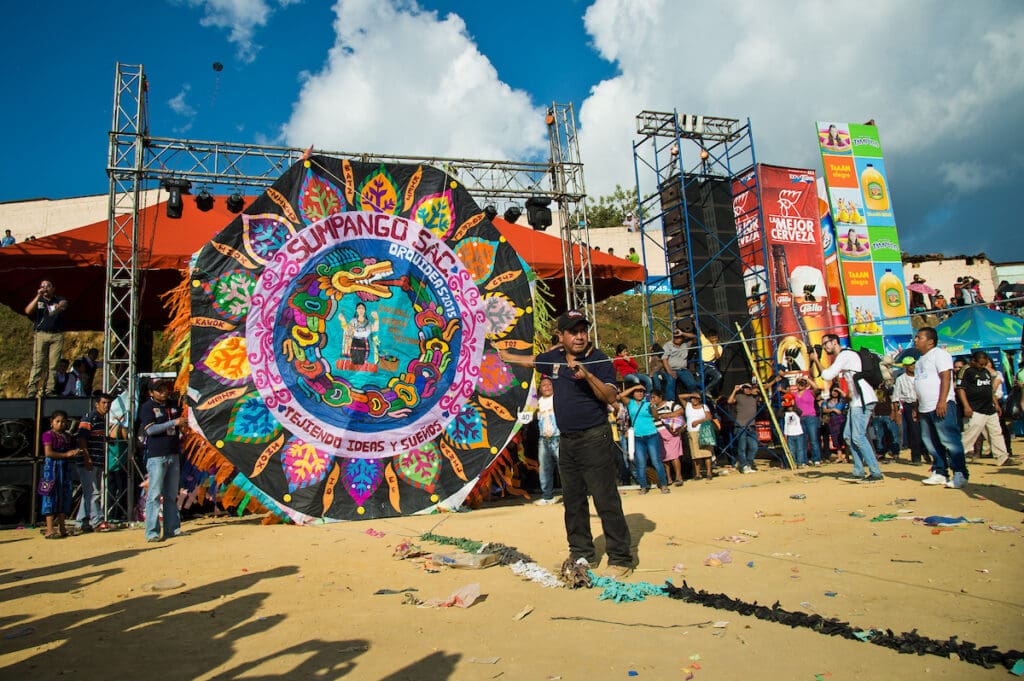
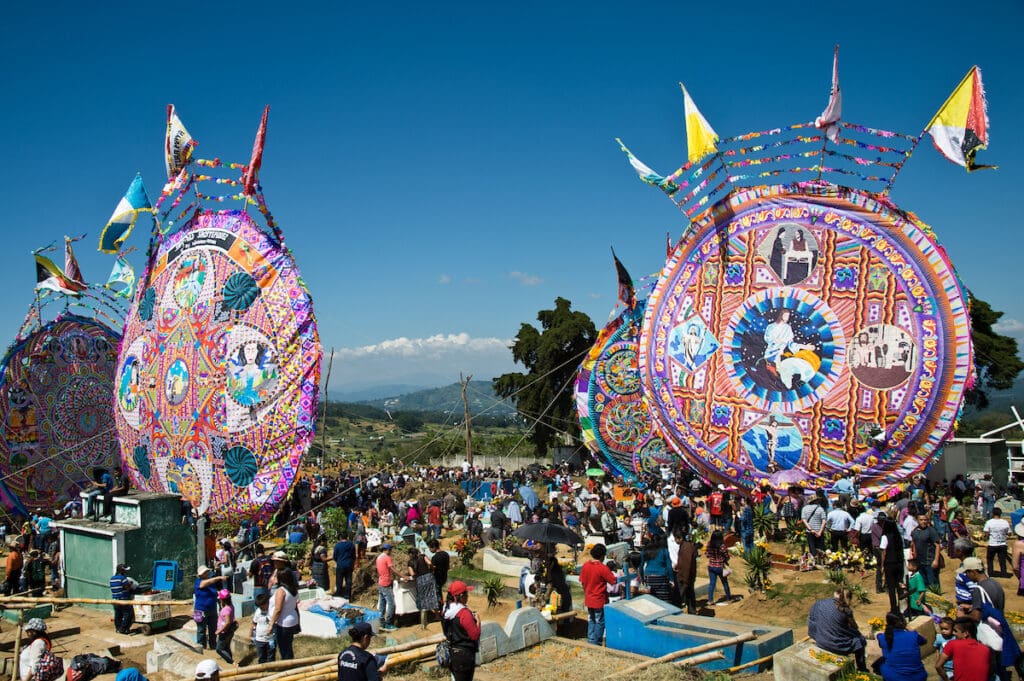
The tradition of making kites goes all the way back to ancient Mayan beliefs that kites were a way to reach ancestors, acting as a ladder up to the spirit world and also directing spirits back to earth for the Day of the Dead. Now, these are not your traditional diamond shaped kites, these are huge octagonal fabrics filled with geometric shapes that represent the sun and the four cardinal directions. Paper frills on the edges of the kites rub together to make sounds to ward off evil spirits and also represent the rays of the sun.

For months in advance of the festival, teams of kite makers (barrileteros) begin working on the beautifully detailed kites. Many kite making teams are made of folks from the younger generation. The designs are usually kept a secret and revealed on the Day of the Dead where they are ceremonially raised and hung in front of a crowd. The kites range from your normal flag size, to the size of a large area rug, to as big as the side of your house. Year round, you can find small versions of these kites hanging in graveyards or neighborhoods or being flown by children.

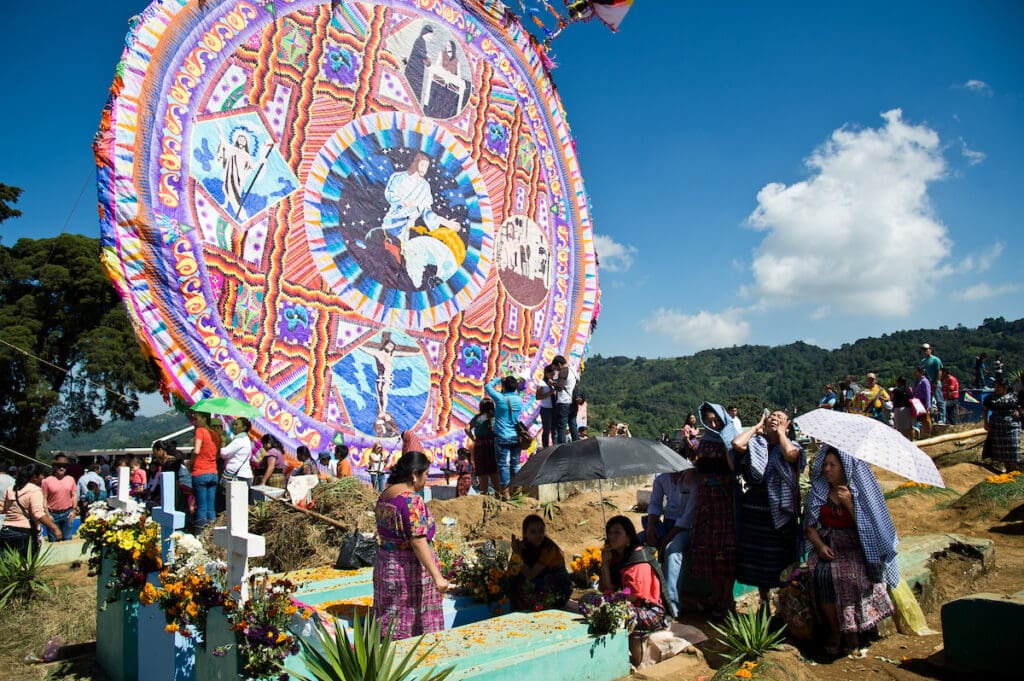
The materials to make the kites are sourced directly from the surrounding environment. The glue used is made of yucca flour mixed with lemon peel and water. The body of castilla, a plant similar to what we know as wheat, helps create the skeletons of smaller kites. Bamboo is harvested to frame larger kites and then tied with hemp and wires to create a polygonal shape in a process called “lunada del barrilete.”
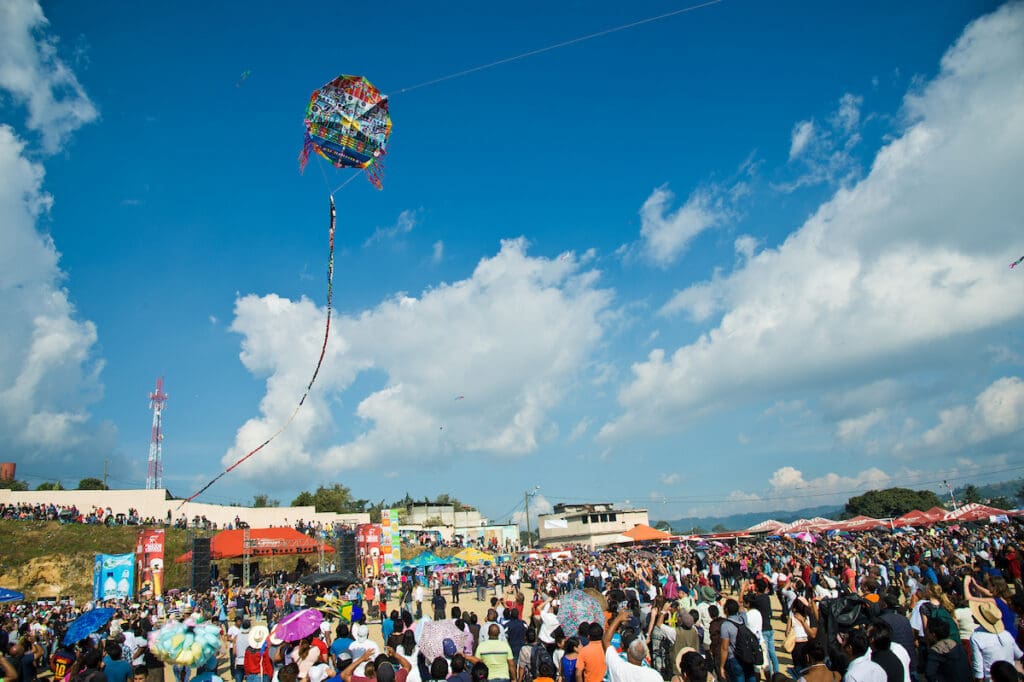
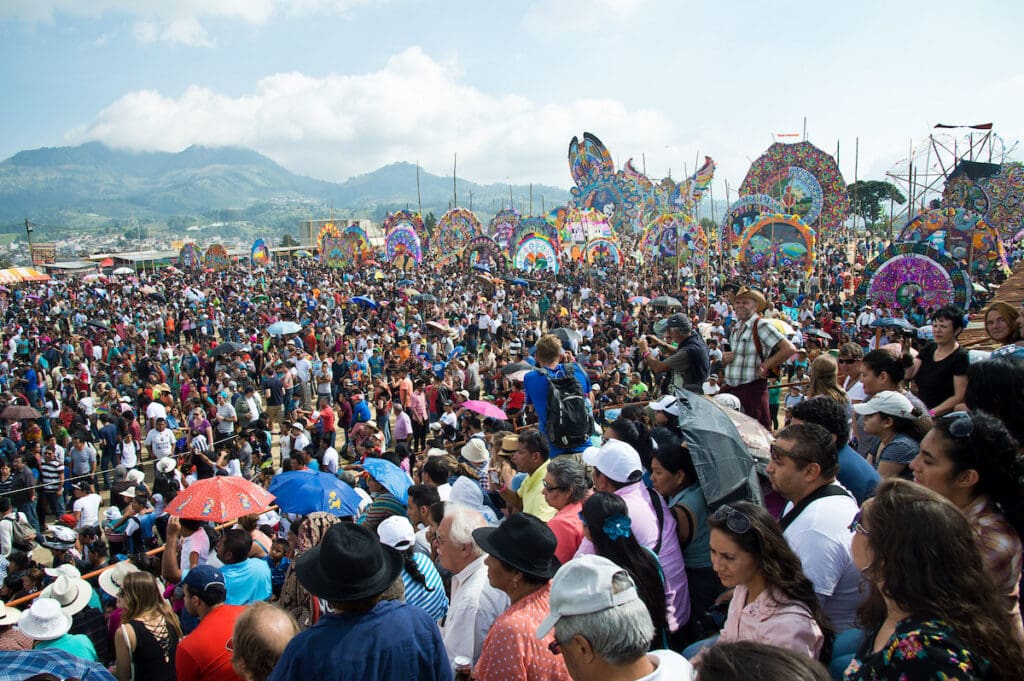
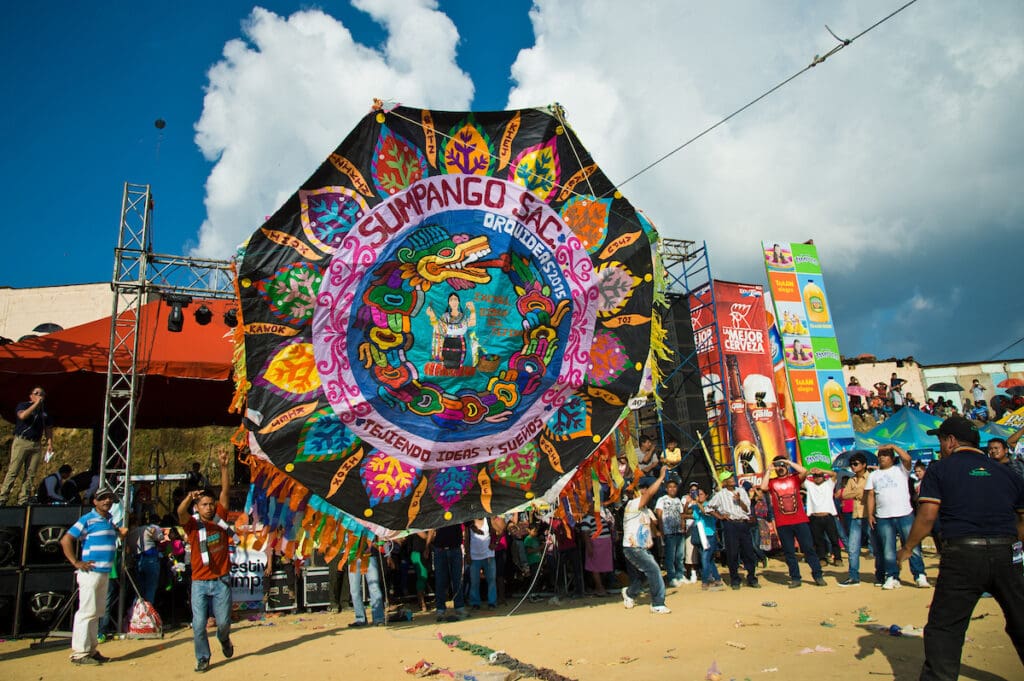
The kites are decorated with symbols and colors that are representative of Mayan cultural beliefs. In past years, the designs were geared toward sending messages to the dead, but now the designs range anywhere from ancestral symbols, contemporary political and social issues, or just for fun. The frills of paper on the edges are often filled in with handwritten prayers of messages for the loved ones that get to visit from the spirit realm.
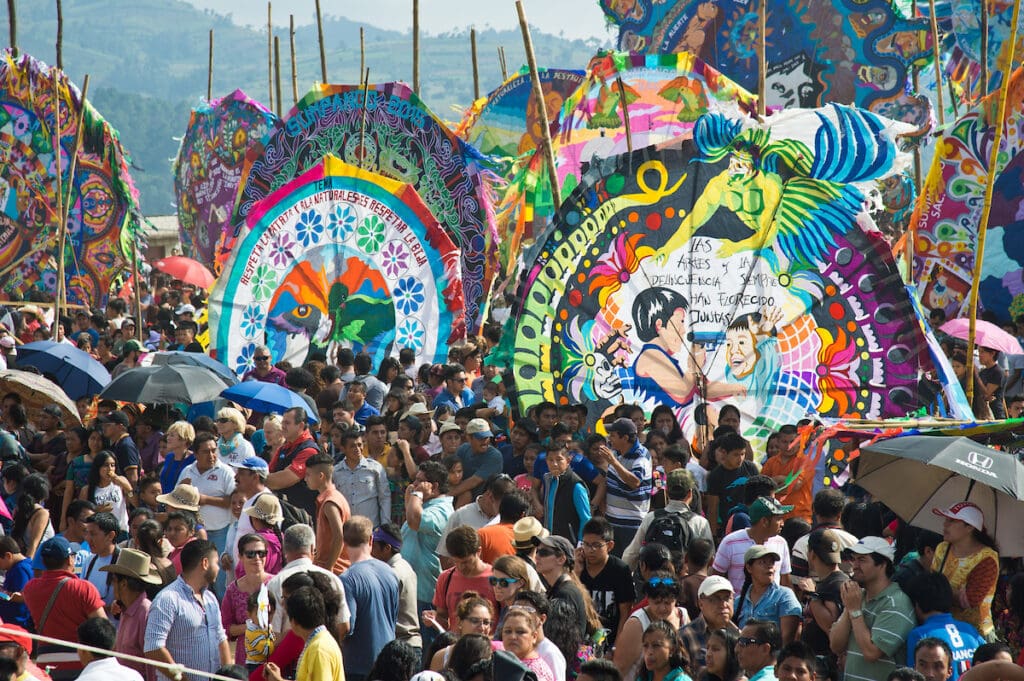
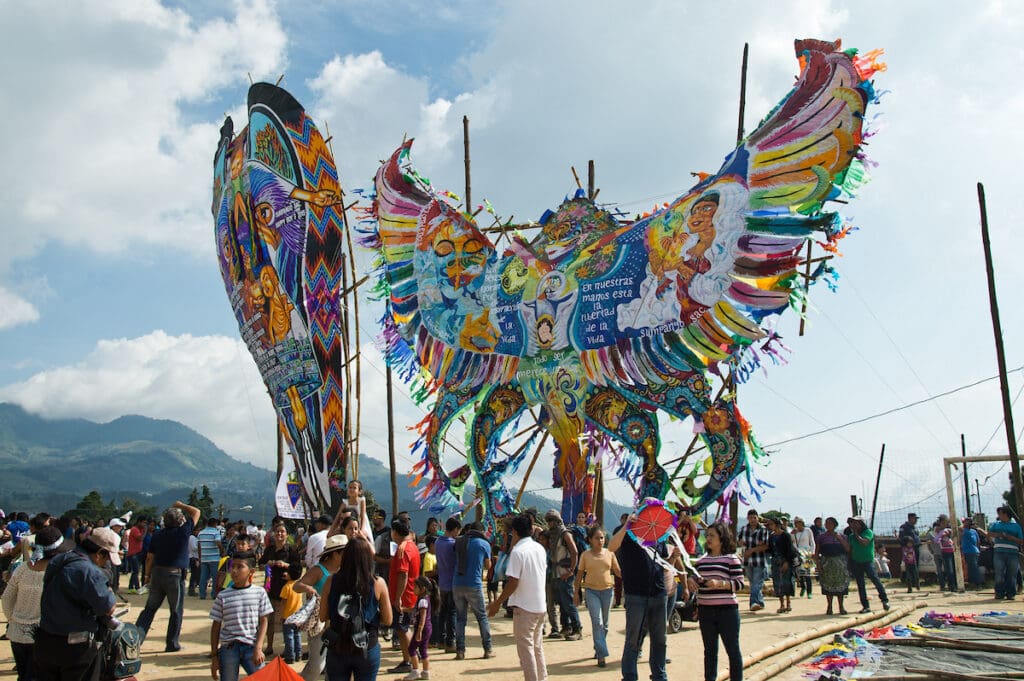
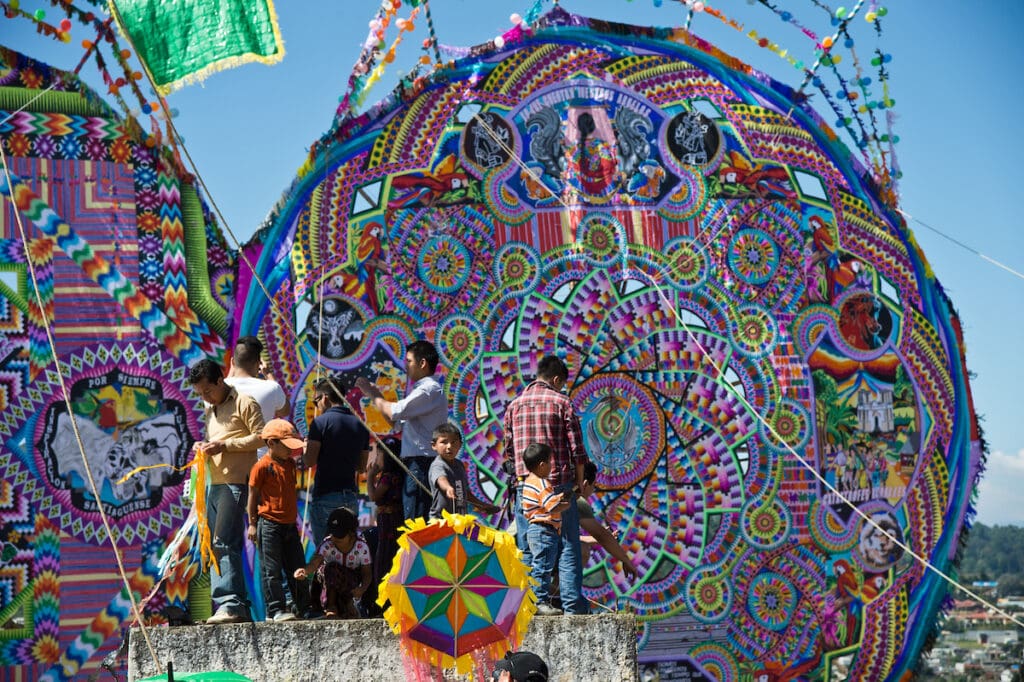
The towns of Sumpango and Santiago Sacatepéquez in Guatemala have a large Maya indigenous population, so they take their kite making very seriously. They make massive kites that can be up to two stories tall that are incredibly ornate and colorfully decorated. Due to their size, the kites are just for show and cannot actually be flown like some smaller ones can. The larger kites can take a dozen or more people to hoist into the air for display, and they remain on display for the duration of the Day of the Dead festivities.
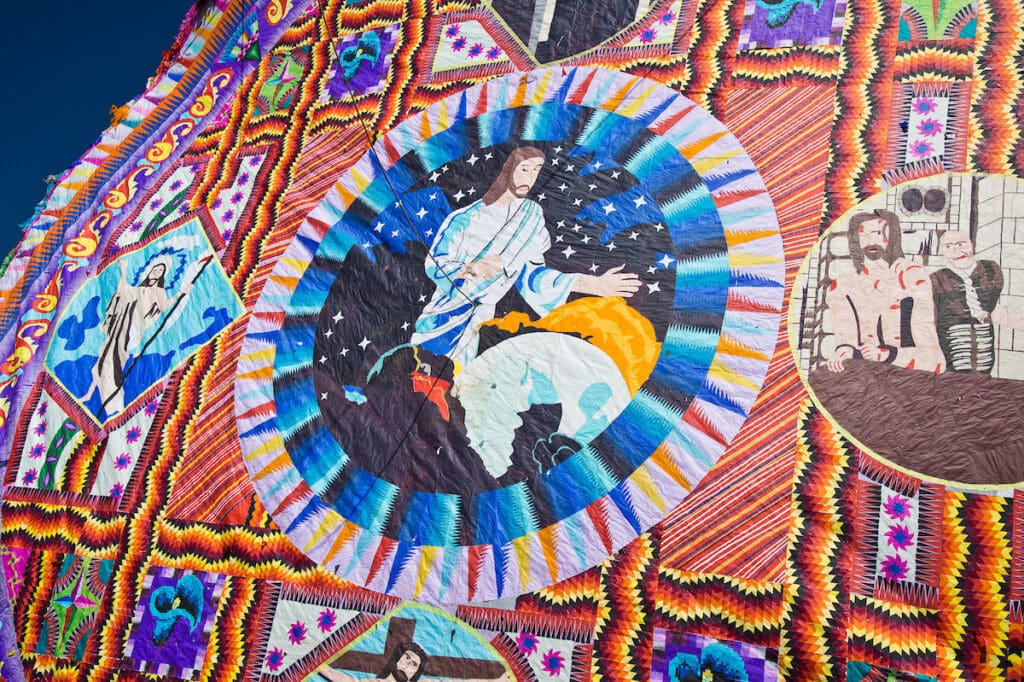
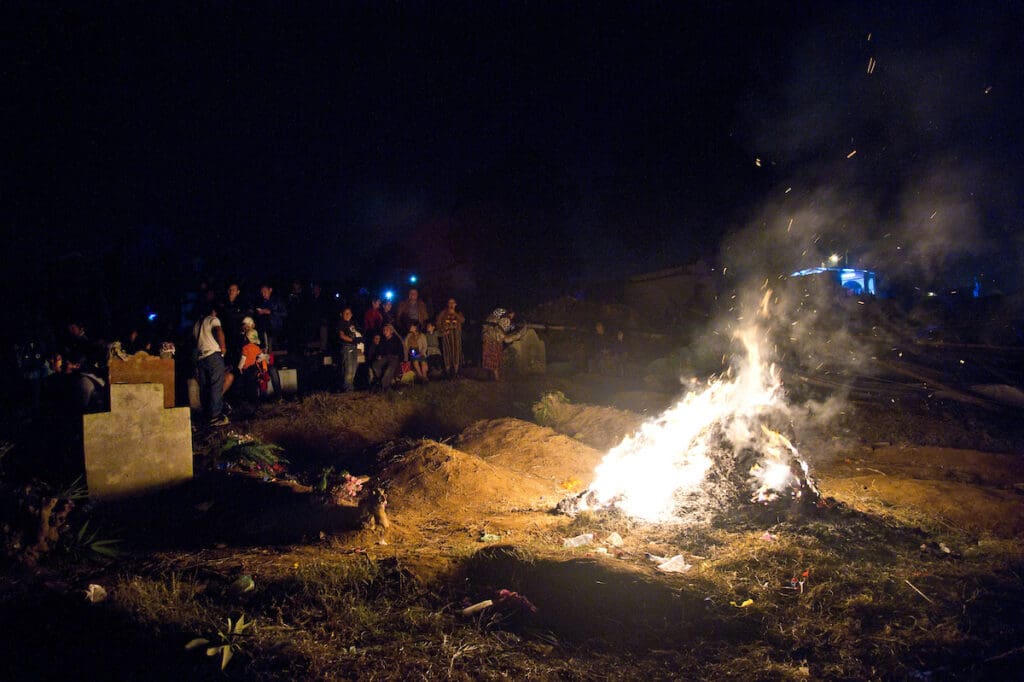
At the close of the Day of the Dead celebrations in Guatemala, many of the kites—especially the massive, two-story creations—are ceremonially burned. This act symbolizes the release of messages, prayers, and intentions to the spirit world, allowing the spirits of loved ones to carry them beyond the earthly realm. The burning is both a solemn and celebratory moment, marking the end of the festival while honoring the connection between the living and the dead. As the flames consume the vibrant kites, the sky seems to echo with the colors and energy of the day, leaving behind a sense of renewal, remembrance, and communal reverence that defines this unique and deeply spiritual tradition.

